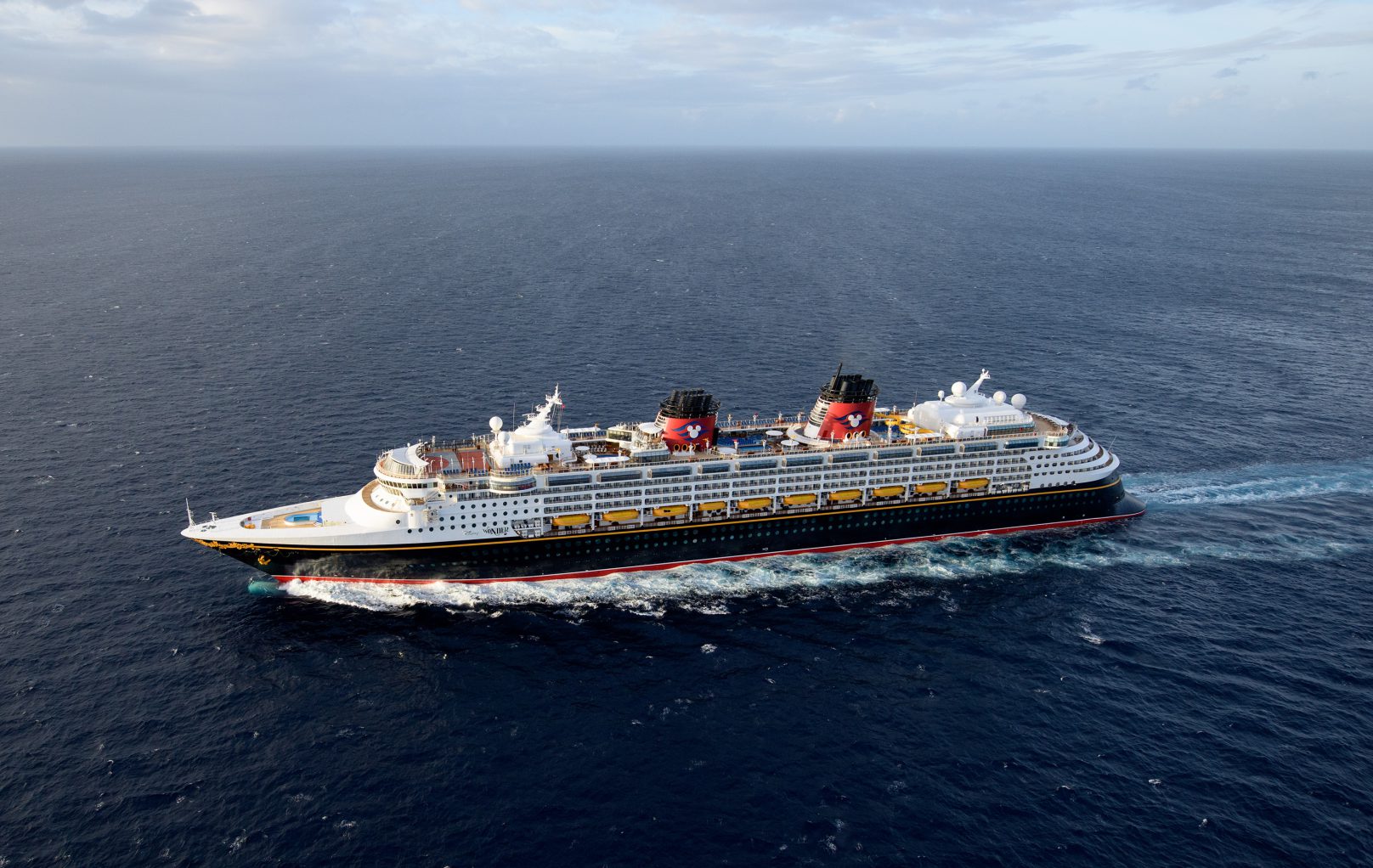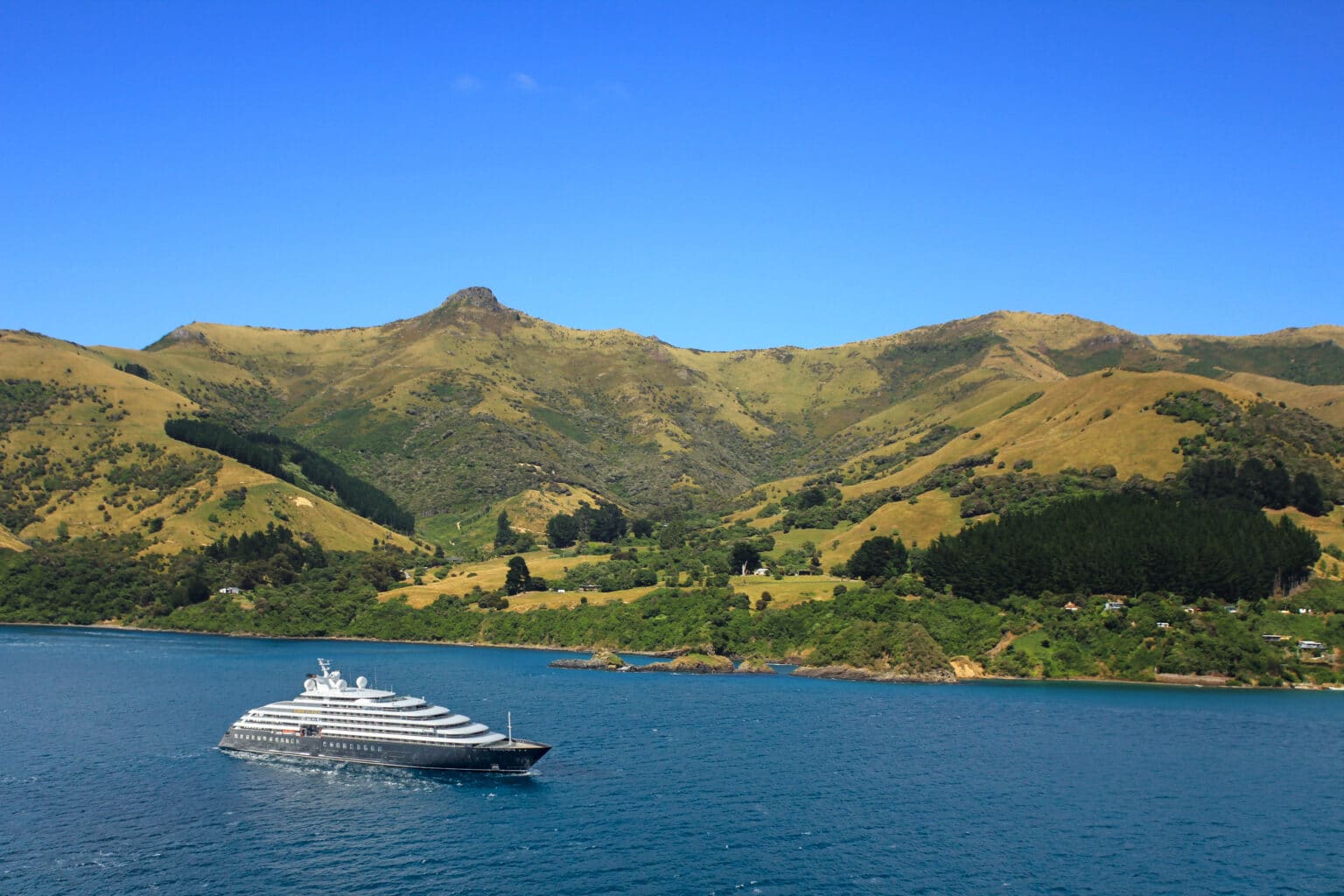- New Zealand’s 2023-24 cruise season was coloured with several biosecurity issues due to some cruise lines arriving with biofoul attached to their hull.
- Ships arriving in New Zealand waters without adequate cleaning, or gradual biofoul build-up, are forced to re-clean in less sensitive areas or skip ports altogether.
- Scenic Eclipse II has become the first ship of the 2024/25 New Zealand cruise season forced to undergo a second cleaning process off shore before entering NZ territory.
“Biofouling continues to be a major biosecurity threat. We know that almost 90 per cent of the exotic marine species already in New Zealand likely arrived here as marine growth on the submerged surfaces of international vessels.”
The above quote comes from Environmental Health Manager, Biosecurity New Zealand, Paul Hallett, who spoke to Cruise Passenger ahead of the 2023/24 cruise season after New Zealand Biosecurity authorities ramped up efforts to ensure arriving ships cleaned their hulls properly to comply with the country’s strict biofouling laws.
According to Biosecurity New Zealand, biofuel and high-risk organisms like mussels, oysters, hydroids, crabs and starfish are some of the biggest threats to the country’s delicate marine environments. Current biofouling standards were introduced in 2018, giving cruise lines direction in proactively managing what the media has dubbed “dirty hull syndrome.”
The issue resulted in numerous cruise lines being forced to change itineraries or skip popular ports like Fiordland and the Bay of Islands altogether. Even if the presence of biofoul was minimal, the standards are understandably quite strict.
Vessels that ran into some biofoul issues in New Zealand last cruise season included Queen Elizabeth, Coral Princess, Viking Orion, Regent’s Seven Seas Explorer, Pacific Explorer and Ponant’s Le Laperouse.
Notably, some of these ships were allowed to proceed with their itinerary after consulting with New Zealand authorities, but others were nudged to less sensitive areas to undergo the extensive cleaning process.
Passengers have little choice but to stay onboard when this happens, potentially meaning more days at sea and less on land as the ship’s itinerary changes.
Scenic Eclipse II has run into the same biofouling issues
Scenic Eclipse II is the first ship to run into biofouling issues after attempting to enter New Zealand waters. Reportedly, the 228-passenger, all-suite luxury expedition ship is currently sailing on an itinerary originally due to conclude on November 8 in Auckland.
While operation staff carried out an initial cleaning operation, an additional inspection found that additional cleaning was needed to enter New Zealand waters.
This has necessitated significant readjustments to the itinerary. A second cleaning must take place off the coast, which means extra sea days are needed to carry out the work. While Scenic is working to manage the situation, assumedly many passengers would be feeling frustrated at the last-minute changes.

Disney Wonder
Just a few days ago, Cruise Passenger also reported that Disney Wonder was forced to cancel a scheduled port call to the New South Wales town of Eden due to extensive hull cleaning necessary to pass New Zealand’s biofoul laws.
The Ministry for Primary Industries (MPI) of the New Zealand government has previously communicated to Cruise Passenger that it is in regular contact with cruise lines before they visit, to attempt to prevent the possibility of problems on arrival.
But given the high awareness of New Zealand’s biofoul rules, one must wonder why some cruise lines still seem unprepared.
What could be the reason for dirty hull syndrome?
Dirty Hull Syndrome. The rather crude description was coined due to the frequency of the issue. And while the implication so far has, of course, damned cruise lines for not being more compliant, some seem to think the issue is being caused by warmer water in general.
According to Electronic Fouling Control, warmer temperatures in our oceans only accelerate the metabolism and reproductive rates of biofouling organisms such as oysters and starfish. This leads to increased settlement and colonisation on submerged surfaces, like a ship’s hull, with organisms growing thicker and faster.
An example the website uses is algae. Warmer sea temperatures cause this common biofouling organism to float to the surface of the water which prevents sunlight from reaching marine life.
This not only traps heat and further increases water temperature, but it also makes algae more likely to stick to the biofilm of slime from bacteria on the hull of ships and boats. Macro-fouling organisms such as barnacles and mussels are then able to attach to this algae, hence leading to the aforementioned issue.
Climate Change also has significant impact on the durability of traditional antifouling coatings due to warmer, more turbulent and more acidic seas and oceans. This works in a number of ways. Warmer water can cause biocides to leach more quickly and cause faster erosion of ablative antifouling paints.
A double-edged sword for New Zealand’s cruise industry.
While the need to protect New Zealand’s marine ecosystems is unquestionable, the ongoing issue of biofouling lay at odds with the cruise industry’s substantial contribution to the New Zealand economy.
According to a recent economic impact assessment, the cruise tourism industry in New Zealand contributed an impressive NZ$1.37 billion to the local economy over the 2023-24 season.
According to the report, which was jointly commissioned by Cruise Lines International Association (CLIA) and the New Zealand Cruise Association (NZCA), direct spending by cruise passengers, crew members and cruise lines totalled NZ$637.8 million. All the while indirect and induced spending amounted to NZ$729.2 million.
This includes the many related industries that kiss the cruise industry each time a new ship arrives, from transport and logistics to food production and retail.
Despite this, many cruise lines have been opting to bypass New Zealand ports due to high costs and regulations.
“We’re seeing a 20 per cent decline in the coming season,” said Cruise Lines International Association, Managing Director for Australiasia Joel Katz.
“We’ve seen an even larger decline in the season after that, and that translates into hundreds of millions of dollars and thousands of jobs that are potentially lost because those ships aren’t able to come.”
Despite this, last season was a successful one for New Zealand with more than 1000 ship visits and 1.5 million passenger visit days.
With rising costs, uncertainty over regulations and a recent border levy hike slapping cruise lines with up to $3.2 million of extra unbudgeted costs
“What we’re seeing is those increases made within the booking window of a cruise trip, so in that case, the cruise lines have to incorporate those additional costs,” said New Zealand Cruise Association chief executive Jacqui Lloyd.
“They can’t pass those on to a passenger that has already purchased tickets, and that’s increasing the cost into New Zealand.”








